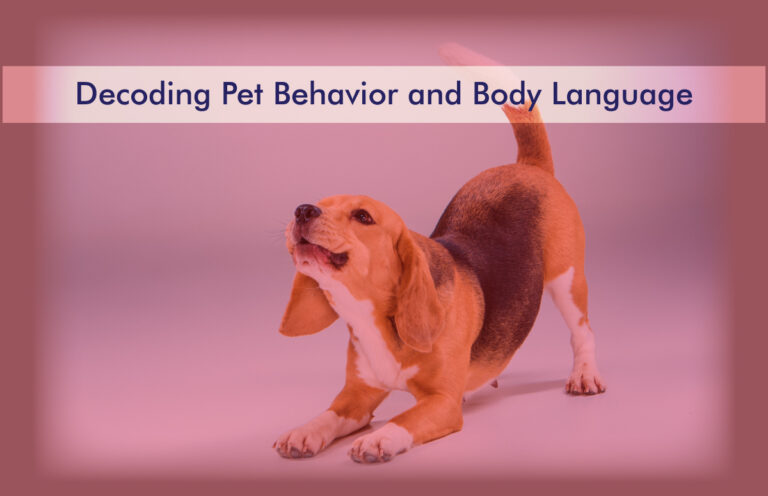7 Tips for First-Time Pet Owners: A Comprehensive Guide to a Happy and Healthy Pet
Table of Contents
- Introduction
- 1. First Time Pet Owners – Prepar Your Home for a New Pet
- 2. Choosing the Right Pet for Your Lifestyle
- 3. Establishing a Routine and Setting Boundaries
- 4. Providing Proper Nutrition and Hydration
- 5. Grooming and Hygiene Practices
- 6. Veterinary Care and Health Maintenance
- 7. Socialization and Training
- FAQs
- Conclusion:
Introduction
Bringing home a new pet is an exciting and joyful experience. As a first time pet owners, you want to ensure that you provide the best care and create a loving environment for your furry friend. To help you navigate this new journey, we have compiled a comprehensive guide of essential tips for first time pet owners. From preparing your home to ensuring their well-being, this article will provide valuable insights and practical advice to help you become a responsible and confident pet parent.
1. First Time Pet Owners – Prepar Your Home for a New Pet
- Pet-Proofing Your Space
Bringing a new pet into your home means taking immediate steps to create a safe environment for them. Pet-proofing involves identifying and addressing potential hazards, securing loose objects, and ensuring toxic substances are out of reach. We’ll provide you with a checklist to make your home pet-friendly.

- Creating a Comfortable Living Area
Your pet needs a designated space to relax, sleep, and feel secure. We’ll guide you on creating a cosy and comfortable living area that meets your pet’s needs, including selecting an appropriate bed, providing suitable bedding, and adding comforting elements to make them feel at home.
- Gathering Essential Supplies
Before your new pet arrives, gathering the necessary supplies to cater to its basic needs is crucial. We’ll outline the essential items you should have, such as food and water bowls, a collar or harness, identification tags, a leash, toys, grooming tools, and a crate or carrier.
2. Choosing the Right Pet for Your Lifestyle
- Considering Size, Breed, and Temperament
Selecting the right pet involves understanding its size, breed characteristics, and temperament. We’ll explore different breeds and help you determine which ones align with your lifestyle, activity level, and living arrangements. Considering these factors will ensure a harmonious match between you and your pet.
- Assessing Time and Commitment
Owning a pet requires time and commitment. We’ll help you assess your availability and discuss the level of attention, exercise, and socialization different pets need. By understanding these aspects, you can choose a pet that fits well into your daily routine and receive the care they deserve.
- Researching Health and Care Needs
Each pet has specific health and care needs. We’ll guide you through researching common health issues, grooming requirements, exercise needs, and breed-specific considerations. This knowledge will equip you to provide appropriate care and seek professional help.
3. Establishing a Routine and Setting Boundaries
- Regular Feeding and Exercise Schedule
Pets thrive on routine, and establishing a consistent feeding and exercise schedule is vital for their well-being. We’ll provide guidance on determining the appropriate feeding frequency, portion sizes, and exercise requirements based on your pet’s age, breed, and health condition.
- Implementing Basic Training Commands
Training is essential for building a strong bond with your pet and ensuring their safety. We’ll cover basic training commands such as sit, stay, come, and leash manners. Our tips and techniques will help establish clear communication and reinforce positive behaviours.

- Creating Safe Spaces and Boundaries
Setting boundaries and creating safe spaces in your home is crucial for your pet’s safety and security. This helps prevent accidents, reduces anxiety, and promotes a harmonious living environment. We’ll discuss the importance of crate training, establishing pet-free zones, and using baby gates or barriers to create designated areas.
4. Providing Proper Nutrition and Hydration
- Understanding Dietary Requirements
A balanced and nutritious diet is vital for your pet’s health and well-being. We’ll explain the basics of pet nutrition, including the importance of essential nutrients, understanding pet food labels, and selecting the correct type of food based on your pet’s age, breed, and specific dietary needs.
- Selecting High-Quality Pet Food
With numerous pet food options, choosing the right one can be overwhelming. We’ll guide you on evaluating pet food quality, including reading ingredient lists, considering food types (dry, wet, raw), and understanding dietary preferences for different pets.
- Ensuring Fresh Water Availability
Hydration is essential for your pet’s health. We’ll emphasize the importance of always providing fresh and clean water, along with tips on choosing the suitable water bowl, ensuring accessibility, and encouraging regular hydration habits.
5. Grooming and Hygiene Practices
- Regular Brushing and Bathing
Grooming is vital in maintaining your pet’s hygiene and overall appearance. We’ll discuss the importance of regular bathing and brushing, including appropriate grooming tools, techniques, and frequency based on your pet’s coat type and individual needs.
- Nail Trimming and Ear Cleaning
Proper nail trimming and ear cleaning are essential for your pet’s comfort and health. We’ll provide step-by-step instructions on safely trimming your pet’s nails and cleaning their ears, along with tips to make these tasks stress-free for you and your pet.
- Dental Care and Oral Hygiene
Dental health significantly impacts your pet’s overall well-being. Maintaining good oral hygiene will contribute to your pet’s long-term health. We’ll delve into the importance of dental care, including teeth brushing techniques, chews, and regular veterinary dental check-ups.
6. Veterinary Care and Health Maintenance
- Finding a Trusted Veterinarian
Establishing a relationship with an experienced veterinarian is crucial for your pet’s ongoing healthcare needs. We’ll guide selecting a reputable veterinarian, factors to consider, and questions to ask during your initial visit.
- Scheduling Routine Check-ups and Vaccinations
Routine veterinary check-ups and vaccinations are vital for preventing diseases and ensuring your pet’s well-being. We’ll discuss the importance of vaccinations, deworming, flea and tick prevention, and regular health screenings to protect your pet.
- Monitoring Signs of Illness or Distress
It’s essential to be vigilant and recognize signs of illness or distress in your pet. We’ll outline common symptoms that warrant veterinary attention, such as changes in appetite, behaviour, or physical appearance. Understanding these signs will enable you to seek timely medical assistance for your pet.
7. Socialization and Training
- Exposing Your Pet to Different Environments
Socialization is crucial for a well-rounded pet. We’ll provide guidance on exposing your pet to various environments, people, and other animals in a controlled and positive manner. This helps build their confidence and ensures they develop into friendly and well-behaved companions.

- Encouraging Positive Interactions with Humans and Other Animals
Positive interactions with humans and animals are essential for your pet’s social skills. We’ll share tips on facilitating safe and positive introductions, teaching appropriate behaviour during interactions, and addressing any behavioural challenges that may arise.
- Basic Obedience Training Techniques
Basic obedience training sets the foundation for a well-behaved pet. We’ll cover fundamental training techniques, including reward-based methods, leash training, and addressing common behavioural issues. Consistency and positive reinforcement is vital to successful training.
FAQs
How often should I feed my new pet?
The feeding frequency depends on the pet’s age and type. Puppies and kittens usually require more frequent meals (3-4 times a day), while adult pets can be fed once or twice a day. Consult your veterinarian for specific feeding guidelines.
How do I house-train my new puppy or kitten?
House training requires consistency and patience. Establish a routine, take them outside frequently, reward them for eliminating them in the appropriate spot, and be consistent with positive reinforcement and gentle correction. Crate training can also be beneficial.
What vaccinations does my pet need?
Vaccinations are crucial for your pet’s health. Your veterinarian will create a vaccination schedule based on your pet’s age, species, and lifestyle. Standard vaccinations include rabies, distemper, parvovirus, and feline leukaemia.
How can I prevent fleas and ticks on my pet?
Regular use of flea and tick preventives is essential. Keep your pet’s environment clean and consider using preventive measures such as flea and tick collars or topical treatments. Consult your veterinarian for the most appropriate product for your pet’s species and age.
How often should I groom my pet?
The frequency of grooming depends on your pet’s breed, coat type, and individual needs. Regular brushing is recommended for all pets to keep their skin healthy. Dogs with longer coats may require more frequent brushing and professional grooming, while some short-haired breeds may need minimal grooming.
How can I socialize with my new pet?
Socialization is vital for your pet’s development. Expose them to various environments, people, and other animals in a controlled and positive manner. Consider puppy or kitten socialization classes, supervised playdates, and gradual introductions to new experiences.
What should I do if my pet shows signs of illness?
If your pet displays unusual symptoms such as changes in appetite, behaviour, or physical appearance, it’s essential to seek veterinary attention. Contact your veterinarian to describe the signs and follow their guidance for further evaluation and treatment.
How can I ensure my pet’s safety at home?
Pet-proofing your home is crucial to keep your pet safe. Regularly inspect your home for potential hazards and make adjustments accordingly. Secure electrical cords, remove toxic plants, store chemicals out of reach, and use safety gates or crate training if necessary.
How can I train my pet to walk on a leash?
Leash training requires patience and consistency. Start with short walks in a quiet area, use positive reinforcement, and gradually increase the duration and exposure to different environments. Reward good behaviour and redirect any pulling or leash-related issues.
What should I do if my pet exhibits destructive behaviour?
Destructive behaviour can be a sign of boredom or anxiety. Provide mental stimulation with toys and interactive games, ensure regular exercise, and create a safe space for your pet. Consider consulting a professional trainer or behaviourist for personalized guidance.
Note: These FAQs address common concerns of first time pet owners. Suppose you have specific questions or concerns regarding your pet. In that case, consulting with a veterinarian or qualified pet professional for tailored advice is always recommended.
Conclusion:
Tips for first time pet owners is a remarkable journey filled with love, joy, and responsibility. Following these helpful tips will prepare you to provide the best care for your new furry companion. Remember, each pet is unique, so adapt these tips to suit their needs. Embrace the joys of pet ownership, and cherish the special bond you’ll share with your beloved pet for years.







